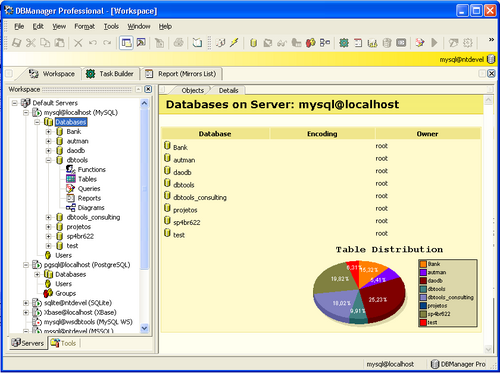


Comparing database types: how database types evolved to meet different needs.

If you would like to know how to avoid downtime for your customers due to service failures, we would be happy to talk to you. By following a systematic debugging approach for service failures, we have been able to minimize the downtime involved. This enables us to prevent a service downtime for our customers who are web hosts. Reinstalling the server – In cases where the MySQL binary is corrupt or installation is incomplete, we reinstall the server and get the service functional.Īt Bobcares, our 24/7 server specialists constantly monitor all the services in the server and proactively audit the server for any errors or corruption in them.Adding more swap memory – If the service failure is due to lack of adequate memory, we resolve that issue by increasing the swap memory allocated to the server.Correcting the configuration errors – Any errors in the configuration file my.cnf or table corruptions are immediately pin-pointed and resolved.

By detailed examination of these log files, we are able to pinpoint and resolve the issues. Examining the error logs – MySQL stores its errors in ‘hostname.err’ and ‘hostname.log’ files.Allocating enough disk space – If the disk space in the server is not enough, we resolve it by removing unnecessary files and folders or moving data to different partitions.The ownership and permissions of the data directory are set such that the mysql user can read and modify them. Fixing the permissions/ownership – We m ake sure that MySQL server can access the data directory.Out of memory – If MySQL process is not getting enough memory due to abusive processes or any other valid process, it cannot start or would keep crashing all the time.Lack of disk space – Another cause for MySQL failures is lack of adequate disk space in the server, which can be verified using ‘df -h’ command.Unable to write to /tmp – If the /tmp directory is not writable due to permission issues or lack of space, MYSQL cannot write the needed files and cannot start.MySQL port already in use – If some other process is running in the MySQL port (default 3306), MySQL would be unable to bind to the port and cannot run.Permissions/ownership of binaries and folders – At times, the ownership and permissions of the MySQL files such as binaries, logs or even the entire ‘/var/lib/mysql’ folder can get accidentally changed, which can lead to errors while starting the service.Corrupt MySQL binary – When MySQL binary or tables gets corrupt, it can cause the MySQL server to fail or not start.Any errors or unsupported parameters in this config file can prevent the server from starting. Errors in configuration – MySQL stores its configuration settings in ‘/etc/my.cnf’ file.There are a number of issues that can lead to MySQL errors, the most prominent reasons we’ve seen are: Reasons for ‘Mysql failed to start’ error in your servers Here, we’ll see the common causes and solutions for ‘Mysql failed to start’ issues.Ĭlick here to protect your web & database services from downtime. Our Support Engineers support the server infrastructure of several web hosting companies, and this is a common issue we’ve seen in many Linux servers. Many a times, you’d have come across this message in your server while trying to restart the database server.


 0 kommentar(er)
0 kommentar(er)
